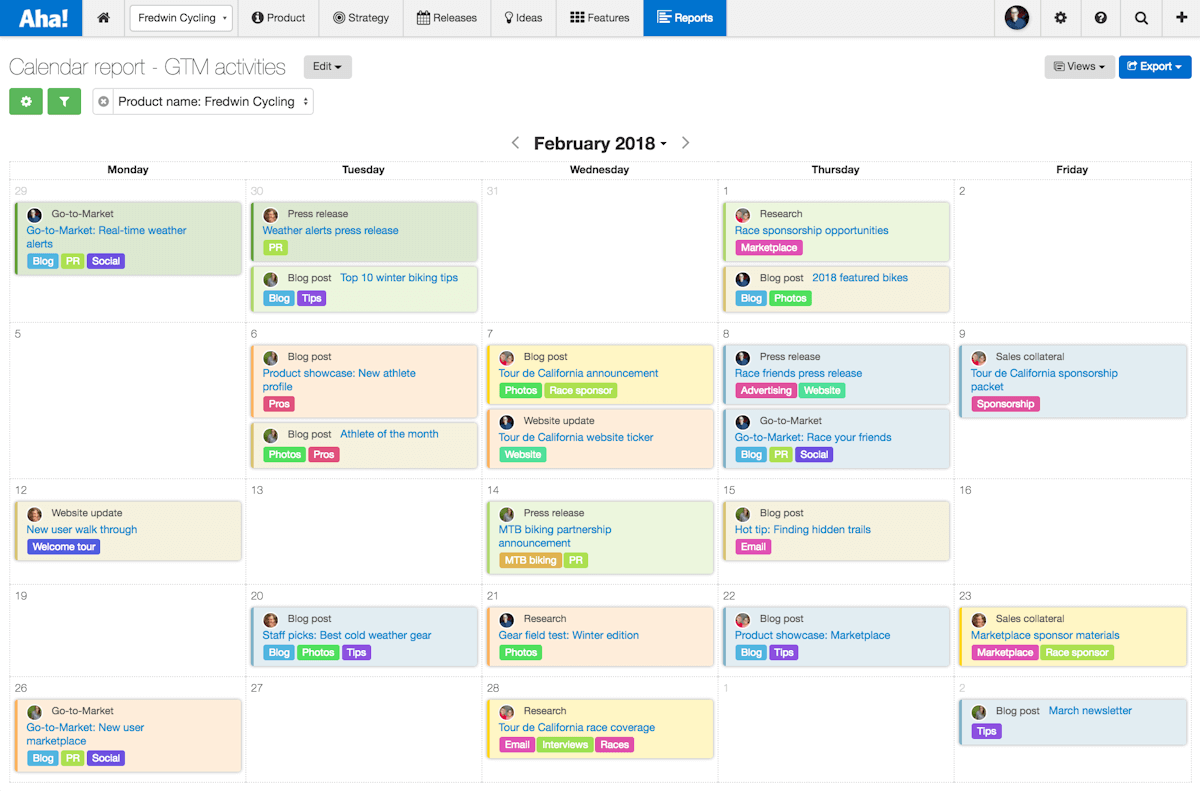Aha project management tool stands at the forefront of enhancing collaboration and efficiency in team settings. By bridging the gap between ideas and execution, this tool revolutionizes the way teams plan, track, and manage their projects. Whether you’re navigating complex projects or simple tasks, Aha provides a user-friendly interface that allows for seamless communication and organization.
The tool not only simplifies project tracking but also integrates essential features that aid in brainstorming, prioritizing tasks, and aligning team efforts with overarching goals. Its versatility makes it suitable for businesses of all sizes, ensuring that every project can thrive with the right resources and support.
In today’s fast-paced digital world, the way we consume information has completely transformed. Gone are the days when people relied solely on newspapers and television for their daily news. Now, with just a click of a button, we can access a vast array of information from around the globe. This shift has not only changed how we receive news but also how we interact with it.
One of the most significant developments in this landscape is the rise of social media platforms. Sites like Twitter, Facebook, and Instagram have become major sources of news for millions. This change has democratized information sharing, allowing anyone with an internet connection to report on events as they happen. However, this has also led to the spread of misinformation and “fake news.” With the sheer volume of content being generated daily, it becomes increasingly difficult for users to discern fact from fiction.Moreover, the way news is presented has evolved.
Traditional journalism typically follows a strict format, presenting facts in a straightforward manner. In contrast, online news often incorporates multimedia elements such as videos, infographics, and interactive content. This shift not only makes news more engaging but also caters to different learning styles. For example, visual learners may grasp information better through videos or images rather than text alone.The implications of these changes are profound.
On one hand, the accessibility of information can empower individuals, making them more informed citizens. On the other hand, the overwhelming amount of content can lead to information overload, causing people to disengage from important issues altogether. Striking a balance between staying informed and not feeling overwhelmed is an ongoing challenge for many.Furthermore, the role of journalists has also evolved.
In the past, journalists were seen as gatekeepers of information, responsible for verifying and presenting news to the public. Today, with the rise of citizen journalism, everyone has the potential to be a reporter. While this has its advantages, such as providing diverse perspectives, it also raises questions about accountability and credibility. Who verifies the information being shared? How can readers trust that what they’re seeing is accurate?Another interesting facet of this evolution is the concept of “news fatigue.” With constant updates and notifications flooding our devices, many people find themselves feeling exhausted by the relentless stream of information.
This phenomenon can lead to apathy, where individuals become desensitized to important issues and events. To combat this, some people are turning to curated news sources or newsletters that provide a more digestible summary of current events.Additionally, the way we interact with news is changing. The traditional model of passively consuming information is giving way to more active engagement. Readers are no longer just consumers but also contributors.
Comment sections, forums, and social media allow individuals to share their opinions and engage in discussions about news stories. This shift has the potential to create a more informed public, as people exchange ideas and challenge each other’s viewpoints.Moreover, the influence of algorithms cannot be overlooked. Social media platforms often use algorithms to curate the content users see, tailoring it to their interests and behaviors.
While this can enhance the user experience by showing relevant stories, it can also create echo chambers where individuals are only exposed to viewpoints that reinforce their pre-existing beliefs. This can hinder critical thinking and prevent exposure to diverse perspectives.The future of news is likely to continue evolving as technology advances. Innovations such as artificial intelligence and virtual reality are beginning to play a role in how stories are told and consumed.
AI can help journalists analyze vast amounts of data quickly, while virtual reality can immerse readers in news stories in ways previously unimaginable. These technologies hold the promise of enhancing storytelling and providing deeper insights into complex issues.However, with these advancements come ethical considerations. As news organizations adopt new technologies, they must also navigate challenges related to privacy, data security, and the potential for manipulation.

The responsibility to maintain journalistic integrity remains paramount, even as the landscape shifts.In conclusion, the way we consume and interact with news is undergoing a significant transformation. While this evolution presents new opportunities for empowerment and engagement, it also poses challenges related to misinformation and the overwhelming nature of information. As consumers of news, it is crucial to remain vigilant, seeking out credible sources and engaging in thoughtful discussions.
Ultimately, the future of news will depend on how we adapt to these changes, balancing the need for information with the importance of discernment and critical thinking. As we navigate this new landscape, our ability to engage with news thoughtfully will shape the quality of our discourse and the health of our democracy.



